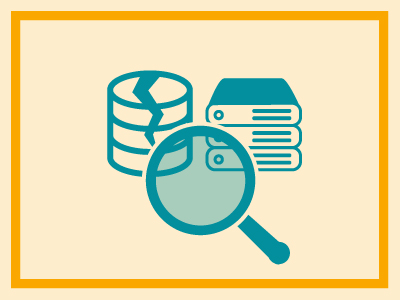With the ongoing pandemic that everyone is trying to work through, there are a couple of things that businesses have had to adapt to very quickly in order to survive. Businesses that have adhered to the rapid changes in their operations have managed to thrive, while others have struggled. Disaster recovery and business continuity plans today are more important than ever due to the shift towards remote work models.
Business Continuity and Disaster Recovery Planning
In the early days of IT emergence, disaster planning did not exist, despite the occurrence and prevalence of disasters. There was no business continuity plans in place from an IT perspective either. Business Continuity has to do with business management procedures that help bring things back to normal after a disaster has occurred.
Both business continuity plans and disaster plans are designed to bring things back to normal in the event of a catastrophe. There are many things inside of these plans to name. Nonetheless, as far as contingency planning goes, you have to first determine what is meant by a disaster when planning for a contingency.
An ultimate plan determines all plans of actions that you will follow in the occurrence of a disaster. This standard plan of actions will be for business continuity, operation continuity, and protection of infrastructure, recovery of valuable data, occupant emergency, and response to cyber attack.
Overall, contingency planning and resilience is a big piece of the equation when planning. For the better part of the last decade, organizations have spent numerous amounts of resources to make certain that there critical infrastructure is protected. Their components, hardware, devices, equipments and have to all have protection in place.
Importance
If a business has a solid disaster recovery plan in place, then they will be able to continue operations in the event of a disaster. You want to make sure that you remain resilient in the event of a disaster, and especially after the incident.
With the help of a continuity plan, businesses are able to get from a disaster to continuity of operations quickly depending on what you are dealing with. It rids businesses from encountering damaging downtime costs. This is the money that businesses have to pay in order to make up for the business lost while operations were dysfunctional due to a disaster.
A disaster can take shape in many forms, from a malicious cyber attack, employee sabotage, human error, to even natural hazards such as on-premise fires and floods. Business continuity plan leads to the disaster recovery plan, and both work in tandem to ensure intricate protection for all the IT systems that you have in place. Business continuity plan makes it certain that you are able to respond to disaster and bring things back to normal.
Three Categories When Establishing a Continuity Plan
It is importance to note three categories when you are establishing a business continuity plan. The first is capital and cash, second is credit, and the third is insurance. Business owners that have a strong grasp on operational efficiencies are well-versed in making tough decisions during uncertain times.
If a business is well-aware of your cash and capital needs, they can get rid of stress that spirals in other areas of business. Having a plan is also essential for avoiding rash decisions in the state of panic. Instead, a plan will help you focus on how much runway you have left in cash, along with the amount of capital you have on hand.
Keeping track of your cash and capital position when formulating a continuity plan gives you a peace of mind when you have to make critical decisions. These decisions can vary from the range of making decisions on growth or cutback decisions for inventory.
Business Continuity in Hindsight
Often times, business continuity plan refers to reversing back to core business services and letting less important activities astray until you can fully recover from the damages. The plan for recovering from a major incident and returning to normal operations requires you to follow certain steps.
The first step pertains to impact analysis which identifies the critical business operations and resources that are important. It also requires businesses to classify and recognize different types of threats and attacks that they are most vulnerable to.
Services that help business formulate a business continuity plan recreate a number of different archetypal scenarios that assist you with testing the business continuity plan. You also have to make sure that you are taking actionable steps to mitigate risks such as creating a readiness plan.
A readiness plan allows your business to initiate the continuity plan in an instance without having to worry about the risks involved. Not to mention, businesses can also benefit from forming a team of leaders within their organization responsible for maintaining and updating the business continuity plan and recovery strategy.
Importance of Training
To safely and efficiently execute the business continuity planning, it is very important to equip the staff with the right training and exercises to carry about the continuity plan. Hiring a professional service that provides continuity services is the best way to incorporate disaster preparedness within the operational framework of the business.
It is not good to have a plan that only exists inside a written document inside your premise. Instead, it needs to reflect in every operation of the business. This level of integration is only possible through advanced IT Third-party Management, and high end Cyber security services.
Get Advanced and Managed Continuity Services
Prescient Solutions have been at the forefront of managed IT service industry for 25 years. With the help of their cloud-based model, they are able to leverage from smart IT solutions and though-out business continuity planning.
Attaining their services for business continuity means that your business will be able to craft a plan that specifically corresponds to the emergent threats that your business is most vulnerable towards. For queries and more information, you can fill their online form, or even call them at (847) 240-3900.


